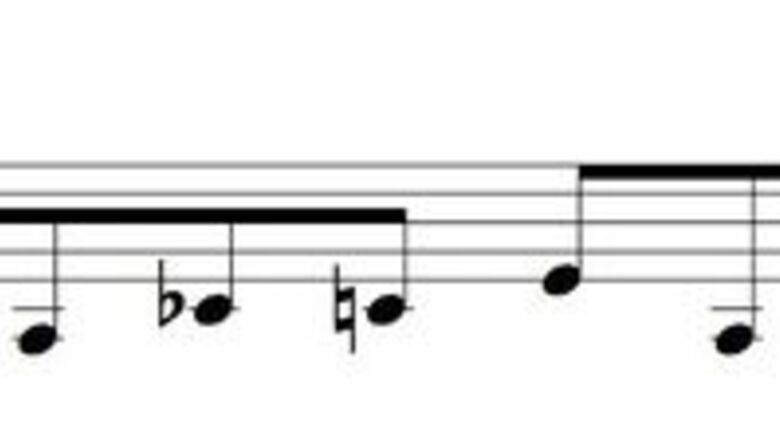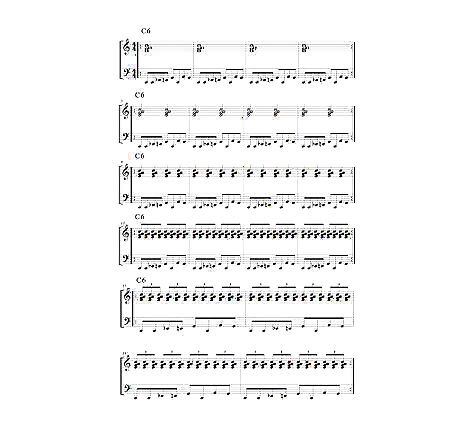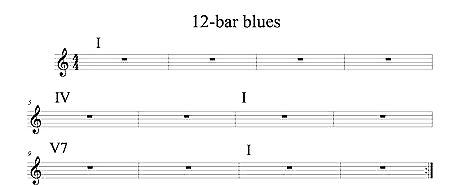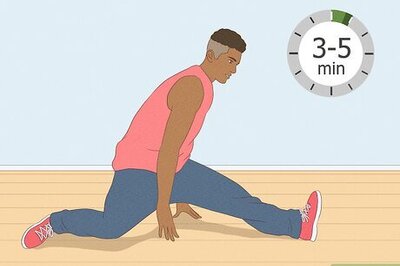
views
Learning the Left Hand

Learn at least one left hand bass pattern. The left hand is the most important feature of boogie-woogie piano playing and without a steady bass pattern there is no hope of playing true boogie-woogie. Most left hand patterns are “8-to-the-bar”, meaning there are eight eighth-notes played in every bar. Learn at least one left hand bass pattern and be able to play it automatically and independently of the right hand.

Develop hand independence. This is a great exercise for getting your foot in the door to achieving left hand independence with any new bass pattern you learn. For this example, use your boogie-woogie left hand pattern from Step two. Play the Shuffle pattern (staying on the C chord) in the left hand, and introduce increasingly complicated rhythms in the right hand, using a C6 chord in the first inversion.
Practice this technique over the three chords of a 12-bar blues. The most common musical form for boogie-woogie songs is a 12-bar blues It consists of three chord changes, the I chord, the IV chord, and the V chord. In the key of C, the I chord is C, the IV chord is F, and the V chord is G. It is absolutely essential that you memorize the 12-bar blues form. You can simply transpose the voicing used for C6 to the keys of F and G, or you can try these different voicings: to make an F chord, simply lower the E to an Eb from your C6 chord. This will make an F9 chord. For a G chord, shift your fingers slightly over to f-g-b-d. Practice the hand independence exercise shown above in the new keys of F (starting the left hand pinky finger on F, and playing an F chord in the right hand) and G (starting the left hand pinky finger on G, and playing a G chord in the right hand).
Learning the Right Hand

Learn a right hand lick. In boogie-woogie piano playing, when the right hand is not playing chords to accompany vocals or another soloist, it usually plays licks. According to Arthur Migliazza’s book “How To Play Boogie Woogie Piano," there are only 8 primary licks, from which infinite variations and combinations are possible. Lick #1 is the most basic, and consists of keeping the right hand in the basic position of a C major triad.

Learn some variations of your first lick. Learn some variations of the lick so that you have more material to work with in your song.
Practice the lick and variations while playing the left hand bass pattern. The next step is to introduce your right hand licks to your left hand boogie-woogie bass pattern. Practice in C, F and G separately. [Note: you can transpose these licks to F and G, or just play them in C while the left hand changes! It still works!]

When you are comfortable playing the licks in all three keys, put them in the context of a 12-bar blues.
Putting it Together with an Introduction and Ending

Learn an introduction. Introductions to boogie-woogie songs vary widely. A very common way to start a boogie-woogie is by simply playing the left hand bass pattern for four measure by itself, and then introduce the right hand.Another common way to begin a boogie-woogie is by using the first two chords of a turnaround progression, the I7 and I dim 7. In the key of C this means C7 and C diminished 7. An intro of this sort is usually four measures in duration and consists of going back and forth between these two chords. These four measures count as the first four measures of the 12-bar form and when the left hand comes in with the bass pattern it is on the IV chord.

Learn an ending. The simplest way to end a boogie-woogie is by playing this figure with the left hand by itself.
Combine a repeating, rhythmic bass pattern in the left hand with chords and licks in the right hand. Use an intro to start and an ending to finish and now you’re playing boogie woogie!


















Comments
0 comment